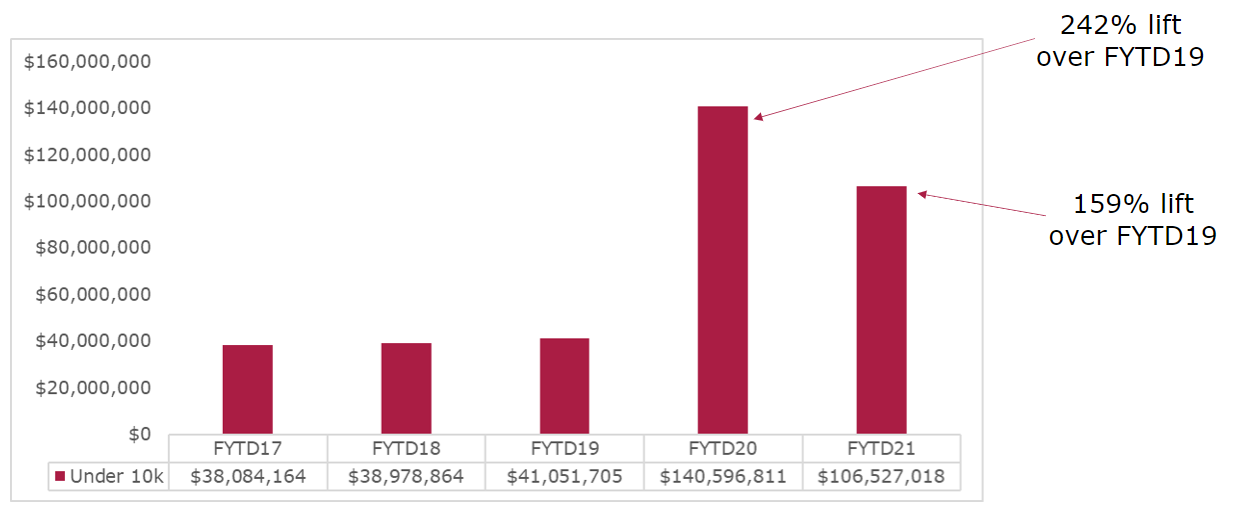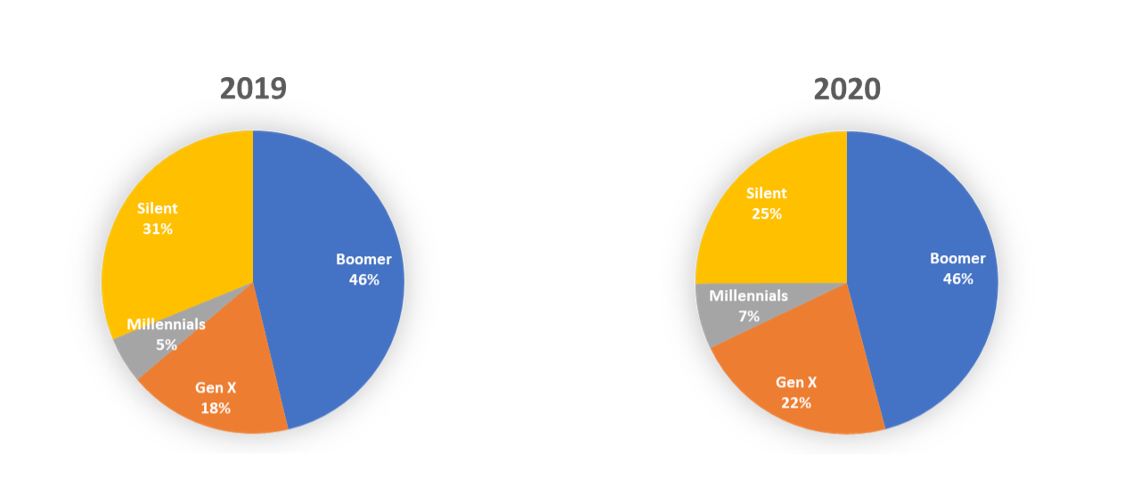From 2020-22, food banks across the nation have experienced historic growth. But as we come back down to reality, what does the “new normal” look like for food banks? How can they leverage this unmatched generosity to plan for a sustainable future?
We decided to find out. First, our VP of Data & Analytics, Lynn Howes, took a look at data from 72 of our food bank partners across the nation to see what this new class of food bank donors looks like.
Then, we sat down for a webinar with three experts from Houston Food Bank, Second Harvest Food Bank of Central Florida and Second Harvest Food Bank Feeding South Louisiana to gain insight on how their organizations are preparing for the future.
Together, we came up with many actionable insights food banks of all sizes can apply to their own programs.
What we’ve learned about new food bank donors
Let’s face it—nothing will compare to 2020. But as we look at numbers from 2021, we’ve still seen tremendous growth. Revenue for our food bank partners is up 159% at the halfway mark of 2021 when compared to the first six months of 2019.
Jan-June 5 Year Revenue Trends
So, although we’re down from pandemic-level giving, food banks are still seeing donations pour in at much higher rates than in the three years leading up to 2020.
And when we look at active donors, the story is very similar. If we’re looking at active donors compared to 2020, we see a decline in numbers—which is to be expected. But, once again, 2021 is still up when compared to 2019.
Jan-June Active Donors/Rev Per Active Donor 5 Year Trends

And, even more impressively, revenue per active donor is the highest it has been in the past five years! So, although active donor counts are declining a bit, donors are still giving at incredibly high rates.
Who are these donors, you ask?
Well, our data tells us that new food bank donors have shifted demographically. In years past, most food banks received support from the Silent Generation and Baby Boomers. But as we see in the chart below, the food bank donor pool is getting younger.
In 2020, active Gen X donors grew by 25% and Millennials increased by 40%.
Active Donors by Generation

But that’s not all. We also know that these younger donors act a bit differently than their older counterparts. On average, younger donors:
- Give larger gifts. In 2020, the average gift for Millennials was $143.40 and for Gen X, $154.33. The Silent Generation and Baby Boomers average gift came in much lower, at $109.93 and $136.06, respectively.
- Prefer digital channels. Millennials and Younger Gen Xer’s typically see an appeal online or through social media, whereas Older Gen Xer’s and Boomers are solicited by phone or via a letter in the mail.
- Have different reasons for giving. Millennials and Younger Gen Xer’s give to increase the reach or “influence” of an organization, while older donors give to make a financial impact.
For more information about these younger donors, check out our recent study on Generation X.
Preparing for the future
So how can food banks use all of this information to prepare for the future? There are many different ways organizations can leverage their growth and invest in new strategies to connect with their changing donor pool.
We sat down with three of our clients to highlight the key areas they were focused on over the next few years.
- Donor Cultivation Strategies. Second Harvest Food Bank of Central Florida knows their new donors like to see the impact their donation, and the organization, is making in the community. Because of this, Director of Marketing and Data Management Maria Shanley said they started sending out impact email newsletters weekly instead of monthly, reducing the number of stories shared, but increasing the frequency donors were getting impact messaging. After making that switch, they began seeing some impact email newsletters raising even more money than emails with a direct ask!
- Monthly Giving. Many food banks saw a rise in monthly donors over the last year, and Houston Food Bank was no different. In response to this rise, Annual Giving Manager Jessica Dominguez said the food bank has made retention a huge focus. Through multichannel touches, welcome notes, auto-responders notifying credit card expirations and even a mail touch for lapsed monthly donors, Houston Food Bank is finding new and more effective ways to reach sustainers.
- Strategic Multiyear Planning. As food banks reassess what the future looks like for their organizations, strategic multiyear planning will be critical. Director of Development Heather Sweeney said Second Harvest Food Bank Feeding South Louisiana is using this time to meet as an organization and map out a strategic 10-year plan. While fundraising will play a huge role in this plan, the food bank will also be taking time to better understand what it will take to meet the needs of their service area.
There are countless other ways our food bank clients are investing in their futures. Whether it’s through increased staffing, new buildings, DEI, planned giving and more, food banks who use this time of growth to look ahead will see more sustainable success.
To learn more about new food bank donors and to hear the rest of our conversation with Houston Food Bank, Second Harvest Food Bank of Central Florida and Second Harvest Food Bank Feeding South Louisiana, watch the recording of our webinar below.





Leave a comment: